Introduction
Today I’m going to share with you the most
comprehensive guide on Amazon Advertising in 2021.
In this comprehensive guide I’ll cover:
- Chapter 1: Intro to Amazon Advertising
- Chapter 2: Amazon Advertising Fundamentals
- Chapter 3: Optimize Your Amazon Listing with Conversion Rate optimization
- Chapter 4: Boost your paid and organic click through rates
- Chapter 5: Keyword research for Amazon Ads
- Chapter 6: Advanced Amazon Advertising Strategies
So if you want to grow your brand on Amazon, you’ll love this definitive guide.
Let’s get started.
Chapter 1: Intro to Amazon Advertising
In this chapter I’ll cover the fundamentals of Amazon advertising.
First, you’ll learn exactly what Amazon advertising is (and why it’s important for your Amazon store).
I’ll also tell you everything you need to know about costs, advantages, and why you should be advertising on Amazon.
What Is Amazon Advertising?
Amazon Advertising is a pay-per-click service that works similarly to Google ads. Advertisers only pay when visitors click on their ads. It doesn’t matter if the product sells or not.
Amazon Advertising is growing and attracting more and more sellers every day. Amazon’s eCommerce market share is growing year after year.
So, it’s no wonder that a high percentage of the customers start their product research on Amazon’s platform, which gives you the opportunity to show your products.
Customers are already spoiled with fast shipping and big product selection.
If you are an eCommerce brand owner and you are not advertising on Amazon, you need to do a competitor analysis and see if Amazon makes sense for your business.
To grow your eCommerce business, you have to diversify your traffic sources.
Amazon search works similarly to Google search. When customers type in a search phrase or a keyword in the search box, relevant results will show.
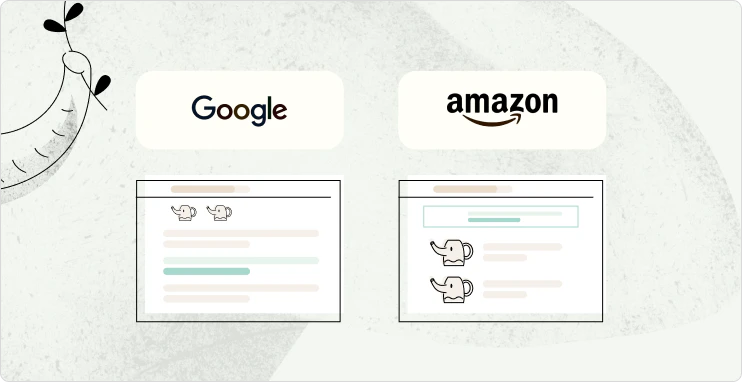
Amazon will prepare a mix between organic and paid results.
Advertisements that show up will have a text with “sponsored” or “ad” like this example:

Sellers that want to show their products on Amazon will pay for the positions at the top by bidding on relevant keywords that the customer is searching for.
Sellers will be charged when a visitor clicks on their advertisement.
The benefits that we see on Amazon for eCommerce brands are cheaper traffic and higher conversion rate compared to Google.
Amazon ads are also visible on product pages.
For example, look at this product page and the advertisement on the right side marked in red.

As you scroll down to the bottom of the page, you’ll find more ads:
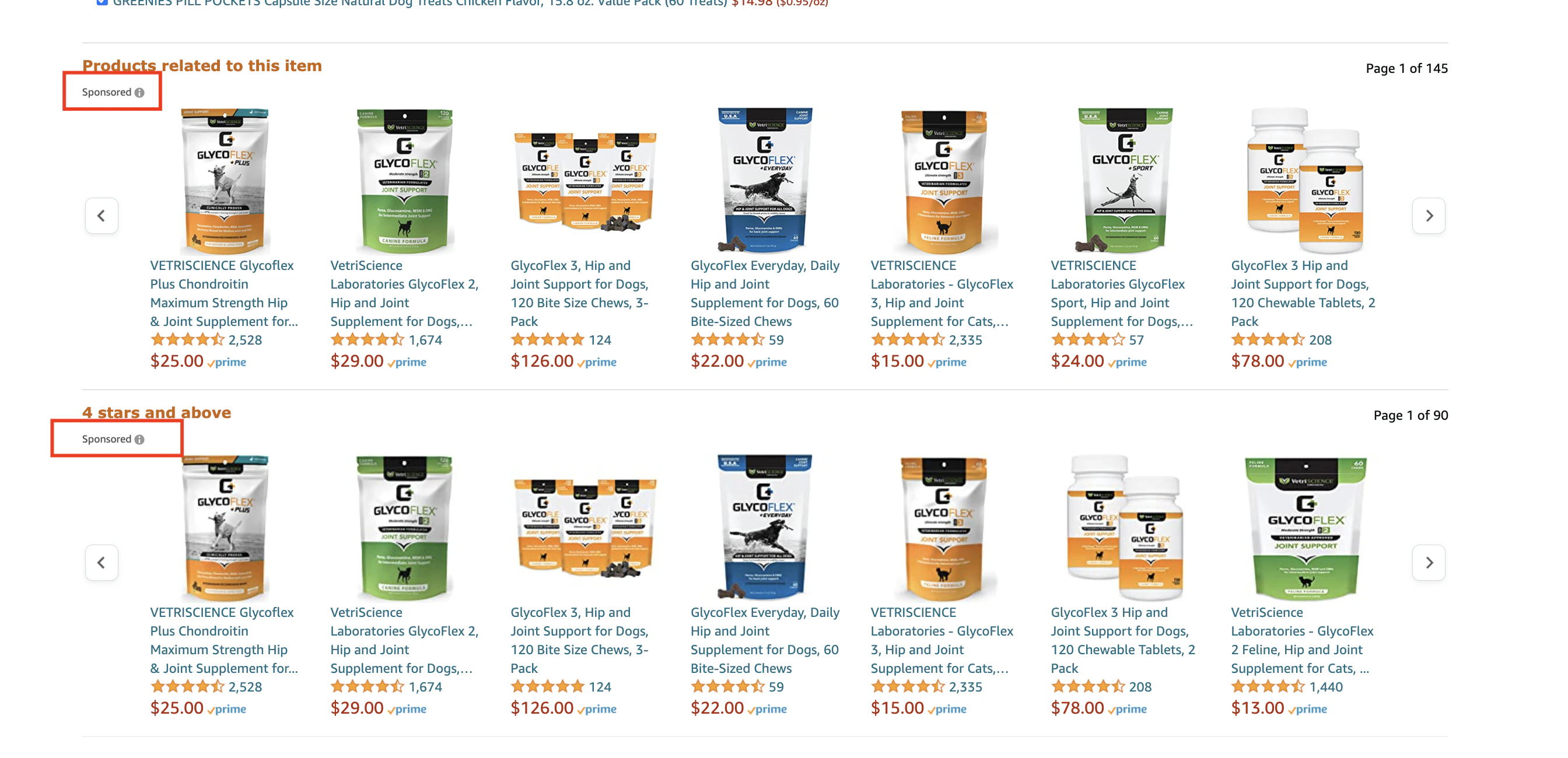
In this definitive guide we will cover all types of Amazon advertising possibilities and best practices.
WHY SHOULD YOU BE USING AMAZON ADS?

Amazon Advertising is a must-have channel for eCommerce brands that are searching for diversification and positive ROI.
Amazon will allow you to unlock an additional source of shoppers that convert extremely well. It’s not uncommon to have a 10% conversion rate on your product pages, especially if you spent the time optimizing them properly.
You might be wondering, why are so many Amazon sellers advertising their products instead of waiting on organic search traffic?
The main reason behind that is PPC Ads on Amazon also boost organic Amazon rankings.
Sellers also receive a higher market share.
In many different client accounts, we have seen that PPC Ads that work well for specific keywords also boost organic rankings for the same keywords.
One of Amazon’s ranking factors is sales history, and if a product sells well with PPC, then Amazon will increase the organic rankings for that product.
WHAT ARE AMAZON ADVERTISING COSTS?

A lot of eCommerce brand owners wonder how much it costs to advertise on Amazon.
It’s very difficult to answer this question, since Amazon uses a bidding model for its ads. The cost will also depend on your niche and how competitive your keywords and niche are.
For example, if you have a niche with a small number of good keywords, and a lot of competitors are bidding on the same ones than you, then Amazon PPC will cost you more compared to niches where you have fewer competitors and more keywords to bid on.
For the past few years, Amazon PPC has become more expensive as competition increases. That is why it’s important to be very specific with your campaign structure, and we always advise on using a setup where it’s clear which campaigns are for testing, scaling, brand search.
Create a solid strategy for your brand and measure your results every three months by verifying the following:
- Are you getting more sales?
- Are you getting more reviews?
- Are you getting more organic traffic?
- Are you getting PPC improvements?
If your products are consumable, then maybe your cost per sale is higher and does not hit your KPI, but later on, when people come back and purchase without clicking on your ads, then your revenue increases without increasing your ad spend, In this case, it’s going to make more sense for you to keep advertising your products, even if the initial cost seems too high.
UNIQUE ADVANTAGES OF AMAZON ADVERTISING

Shoppers go to Amazon every single day not only to shop, but also to discover new digital brands on Amazon. In fact, a large percentage of customers – more than 81% – use Amazon to discover new products or brands.
As a result, Amazon sellers are reaching millions of shoppers and selling their products on the platform.
Unlike a platform like Google Ads, Amazon can offer you better cost per click and a higher product page conversion rate.
DETERMINE YOUR GOALS WITH AMAZON ADVERTISING

Set your goals and track them properly. We see that Amazon sellers are getting lost in day-to-day work and lose the long-term vision of their brand over time.
That’s why you should create goals for your business for months and even years ahead of time.
Segment your goals by business goals and advertising goals.
As an example, you could set up a target goal of your advertising cost of sales (ACoS) as one of your primary metrics for success. You could also focus on impressions or clicks if you are focused on boosting your brand awareness.
We suggest you focus on sales and create your goals around your target ROI/ACOS, but what your goal should be will depend on your current position and needs.
By selecting a proper goal that fits with your current situation, you will be able to choose the right marketing format on Amazon to achieve this goal.
For example, if your goal is to grow your brand awareness, then you might use display ads, video ads, and audio ads.
If your goal is sales and ROI, then we would suggest you use Amazon sponsored product ads or brand ads.
Chapter 2: Amazon Advertising Fundamentals
In this chapter, you’ll learn the fundamentals of Amazon advertising.
We’ll cover all the types of Amazon ads as well as the best practices to use on the platform.
Before you approach Amazon advertising fundamentals, let’s take a look to the marketing funnel on the platform:
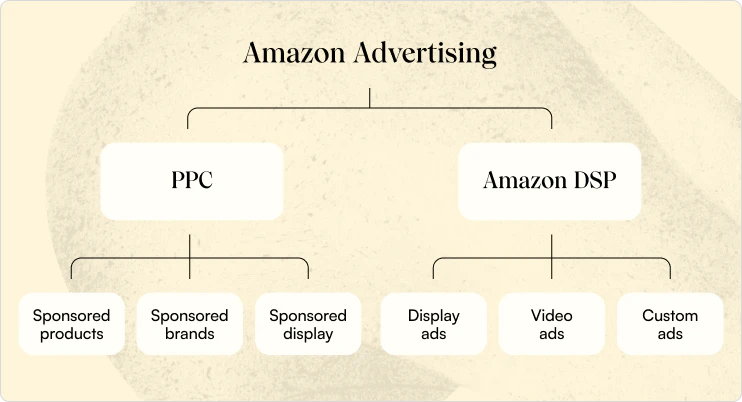
Amazon advertising provides PPC (pay-per-click) and DSP (display sponsored products).
In this chapter we will cover all possible options and best practices for Amazon ads.
AMAZON SPONSORED PRODUCT ADS
In order to grow your Amazon store to the highest level possible, you have to combine Amazon PPC with Amazon SEO.
Remember that the more you sell, the higher you’ll rank.
Amazon ranking is dependent on daily sales.

Amazon Sponsored Product Ads are visible in two positions on the Amazon advertising ecosystem. They are visible in the search results and on the product pages.
Sellers can use automatic or manual targeting for their advertising campaigns. For example, if you are a seller, you will have to pay a fee to Amazon when a shopper clicks on your ad.
Sponsored Product Ads are visible on 3 different positions:
- Search box
- Product pages
- The final position includes external websites as remarketing ads of visitors of a product page which the shopper has seen.
WHY ARE THE BEST SELLERS USING AMAZON SPONSORED PRODUCT ADS?
Amazon sponsored product ads are perfect if you want to get more traffic and sales for your products.
The best sellers on Amazon pay very close attention to their organic rankings.
We have discovered that daily sales improve your organic rankings. Using sponsored product ads will generate you more sales and help you to rank higher in the search engine.
When managed properly, you can make money with your sponsored product ads.
Make sure that you are optimizing your campaigns systematically.
If you have an agency that does that for you and you are wondering if they are doing their job, just look at your campaign history tab and check how frequently your campaigns are being optimized.

Applying keyword bids, proper PPC structure, daily and weekly optimizations are all a must if you want to maximize your return from your Amazon PPC campaign.
BEST PRACTICES – SPONSORED ADS

TESTING AND OPTIMIZATION
With a proper PPC strategy, you can find profitable keywords and campaigns much more quickly.
For example, if you have 1 SKU, then you could implement a set up of 1 testing campaign that is excluding brand keywords.
Once you have profitable keywords for your product, then launch a new campaign with them while excluding these keywords from the testing campaign.
That way, you will have a “proven to work” campaign with your profitable keywords and a “testing” campaign where you will be testing new keywords.
Optimize your placements, add negative keywords, and control your bids.
When optimizing your campaigns, look at the performance for the past week and compare the days.
AMAZON SPONSORED BRAND CAMPAIGNS
I highly advise you to mix your PPC campaigns by using sponsored brand campaigns with sponsored product ads. Diversification is key with Amazon PPC.
You can’t rely only on one advertising format.
Amazon Sponsored Brand Campaigns can work very well if created and optimized properly.
When creating your brand campaigns, you can use 3 types of keywords.
- Brand keywords – this format is a mix of your product and brand name.
- Complimentary product keywords – this format is a mix of products that you can sell together.
- Sponsored products automatic targeting keywords – this format is one of the most used on Amazon, and if you are currently advertising on Amazon, you have most likely experienced success with it.
When using brand campaigns, you can use 3 different products in your advertisement.
You can customize your ads image, landing page, and headline. If you want to maximize the optimization, you should test all of them.
Check this image from Amazon that explains in a little bit better detail the keywords for sponsored brand campaigns.

If you are wondering how much you will pay for your sponsored brand campaigns, it’s impossible to tell.
Amazon uses a bidding system, so pricing depends on your competitors and their bids.
There are niches with lower competition and cheaper traffic, and also niches that are super competitive and have expensive traffic. So how much you pay is really based on the result of the ad auction.
So launch your campaigns and optimize them. You’ll never know if it makes sense for your brand to use this format if you haven’t tried it yet.
Below, Onnit promotes 3 of their products. By clicking on each of the products, shoppers will be redirected to the Amazon product listing. If shoppers click on the “Shop Now” button, they will be redirected to this seller’s Amazon store.

BEST PRACTICES – SPONSORED BRAND CAMPAIGNS
Ad Creative
To maximize your ROI and sales, you have to A/B test your ads. A/B testing essentially means running two variations and testing them against one another – this is also called split-testing.
Start by split testing your products, graphics, and ad copy.
Include your unique value proposition in your ad’s headline and you’ll increase the number of clicks and sales that your paid ads will generate.
Avoid misleading your shoppers. Remember that after they buy your product, if they aren’t satisfied, they might write a negative review that will affect your conversion rate.
Testing
Your ad testing is not based on time. It’s based on ad spend and your target CPA.
If you are selling a product that costs $20, then ideally you would test your creative with $60-80 (3-4x) of your CPA.
Don’t spend more than that on testing if you are not getting a result near your break-even ACoS.
Landing Page Design
When using Sponsored Brands, you can send your traffic to your Amazon store or a conversion-rate optimized product page.
Test both options, and based on the data you generate, take the decision on where to send your paid traffic.
Obviously, your decision should be based on your ROI/ACoS.
AMAZON DISPLAY ADS

Amazon display ads are advertisements that show on product pages, review pages, search results, and listing pages.
The main benefit that we see from this format is for upsells and cross-sells to your customers.
If you want to use this format, you have two options for targeting:
- Product targeting – you can target specific ASINs or categories.
- Interest targeting – you can target shoppers based on interests.
If you are looking to increase your brand awareness or get additional traffic to a product page, then Sponsored Display campaigns can be a great fit for your Amazon strategy.
BEST PRACTICES – AMAZON PRODUCT DISPLAY ADS
Targeting
Target your competitors’ pages with your products.
Upsell or cross-sell your products by advertising on your product pages.
Ad Creative
Craft your headlines with your unique value proposition.
Avoid making fake claims since your ads will be rejected.
AMAZON NATIVE ADS
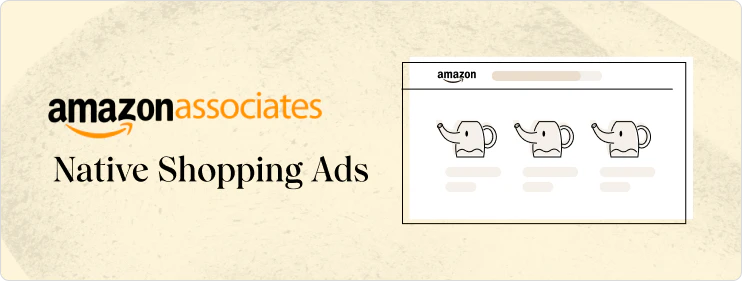
Amazon Native Shopping ads can be used on your own website. You could use search and custom ads or recommendation ads.
Ideally, you can use your recommendation ads on a landing page with a product article. This advertising format is dynamic, so Amazon will use your best product to satisfy shoppers.
Search Ads – Based on keywords that customers are searching for on Amazon or on your website, relevant search ads will show up.
Custom ads allow you to select your own assortment of products you’d like to promote and place them on your product article posts.
If you decide to use custom ads, then you are allowed to choose your products that you would like to promote and position them on your landing page.
AMAZON NATIVE ADS BEST PRACTICE
To maximize your efficiency with native ads, you’ll want to make sure that your ads are relevant to the pages you have placed them on.
You want to educate your audience with an article and then introduce them to your core offer with ads.
Educating your audience before trying to sell them your product could work very well because you are providing value first instead of going for the hard sell straight away.
AMAZON VIDEO ADS
If you have video ads for your products, then you should definitely use them on Amazon too.
You could advertise with your videos on Amazon.com and IMDB.
You can advertise with video content on Amazon and send shoppers to your product page on Amazon or outside of Amazon. It’s up to you.
AMAZON STORES
You can promote your brand by using Amazon’s multi-page store.
If you haven’t set it up yet, you can use Amazon’s templates to create your store.
Amazon stores enable you to track your traffic and sales.
AMAZON STORES BEST PRACTICES
Use Amazon’s analytics tool to review your organic traffic by keyword, sales by keyword, and by products you sold.
Compare that information to your PPC campaigns and look for opportunities to improve.
Here is an Amazon store example:
Amazon Store Optimization Checklist
- Use high quality images
- Write a benefit oriented description instead of selling features
- Make your pricing clear
- Put your best performing products at the top
- A/B test your store: don’t just set and forget, because you always need to look for improvements
Chapter 3: Optimize Your Amazon Listing with Conversion
Rate optimization
Implement Amazon conversion rate optimization to improve your sales.
It doesn’t matter if you are selling well or not. I highly advise you to implement conversion rate optimization for your store no matter your current conversion rate.
What Is Amazon Conversion Rate Optimization?
What is Amazon conversion rate optimization?
Amazon conversion rate optimization is the process of improving your conversion rate by testing out different ad variations.
You can use a split testing to compare two different variations of your product listing.
This A/B test will allow you to understand which listing performs better based on the data generated from the ads.
Ideally, when you are testing this out, you should test only one element at a time, like a product description or a title.
I highly recommend you to test only one element at a time because you won’t know which change led to better results if you test everything at once. Was it the product description or the title that improved your conversion rate? You’ll have no way to know.
The idea with A/B testing is to test everything possible 1 by 1 in order to make sure you are maximizing your conversion rate.
For example, let’s say you are selling natural deodorant and you want to improve your sales.
You start with an A/B test that experiments with different product images.
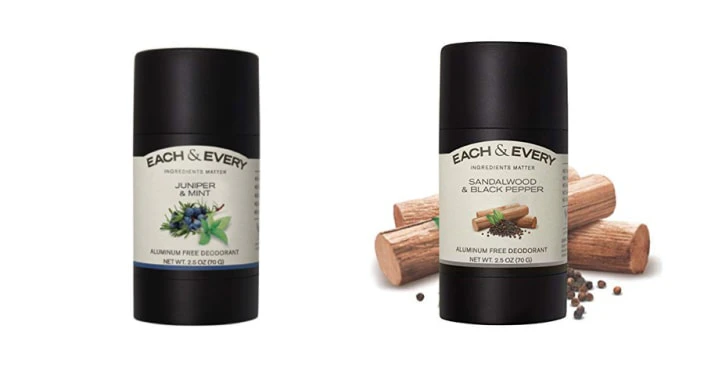
Your “A” version uses a standard product image while the “B” version uses a standard product image, but with wood on the background.
The “B” version is more appealing and gets more organic visitors and sales. As a result, you can now remove the “A” version and use the “B” version to get more sales.
When you have a winning variation, implement it and move forward with your next test for the same product.
Ideally you will test all of your products.
When you have an Amazon conversion rate optimization plan, you can make data-driven decisions that will lead to more sales, without spending more on advertising.
You will also learn more about your customers and what they like when shopping at your Amazon store.
Why do you have to implement conversion rate optimization for your store?
It’s simple. Conversion rate optimization will make you more money.
Here are more reasons:
- CRO will improve your daily sales and profit
- CRO will give you more data about your customers
- CRO will give you insights about your design, description, title, pricing, etc, that you can apply across different product listings.
We are shocked that many Amazon store owners are not implementing CRO.
If you invest in Amazon conversion rate optimization, you’ll be ahead of your competitors for sure.
Amazon is not only about organic traffic and PPC sales.
If you already have daily sales, then implementing CRO can skyrocket your growth.
WONDERING WHAT TO TEST ON AMAZON?
Unfortunately, Amazon doesn’t provide any internal tools for conversion rate optimization, but you can still test a range of elements like:
- Product titles
- Product descriptions
- Product features
- Product price
- Product main feature image
- And much more!
The elements above have the biggest impact on your conversion rate optimization because most of your visitors are looking at these elements.
So if you are still reading this article, thank you! Let’s dive deeper into conversion rate optimization and how to do it.
Let’s start your conversion rate optimization on Amazon
Amazon doesn’t offer any free tools in the Seller Central, so you have 2 options.
1. Track your results manually, or;
2. Use a third party Amazon conversion rate optimization tool.
If you decide to follow step #1, then keep in mind that manually tracking your tests on Amazon is a very time-consuming process.
I tried it years ago, when there weren’t any CRO tools for Amazon.
I highly advise you to avoid it.
One of the biggest issues is data accuracy. When A/B testing, you want to do that in the same time frame, since shoppers have different behaviors from one another.
You can’t test your product image in January and February and compare the two months against each other to measure the outcome of your test.
It’s going to mislead you into making the wrong decision.
That’s why you should invest in an Amazon conversion rate optimization tool, like Splitly. A quick note: we are not associated with any affiliate commissions from this tool, but I simply recommend to use it because of how well it works.

When you are using a conversion rate optimization tool, you can A/B test your variations at the same time.
The software will switch between variations and show you the results.
Before you run any tests, create a plan first so that you know in advance what you’ll be testing.
Outline everything you want to test in the next 3 months. Audit your product listings and choose which to start with.
When we run these tests, we start with the products that have the highest volume and traffic.
This means we receive faster results and improvements.
For example, if you are testing a new product with low traffic, then it might take months to get enough significant data from which you can make a decision.
Focusing on the best performing products will have the highest impact for your business.
START BY BUILDING YOUR HYPOTHESIS
When you have selected the products that you want to start with, you can create a hypothesis about what will work better.
When creating your hypothesis you want to answer to these questions:

Here is an example to get you started:

This hypothesis is the foundation to your conversion rate optimization for your product listings.
Your experiments must have a clear goal and a reason for testing.
Focus on creating quality tests, not quantity.
LAUNCHING YOUR FIRST AMAZON CONVERSION RATE OPTIMIZATION TEST
If you are using a software like Splitly, you can set up your first A/B test there.
Upload your variations (A and B) and launch your first test.
Splitly will cover the rest, combining your versions and showing you the results via an easy-to-read report.
Schedule your tests and take decisions based on data significance, not on time elapsed.
RESULT ANALYSIS
Check your results every week. This depends on your traffic volume, but if you are getting less than 1,000 visitors per week on your product page, then looking up at the data once a week is enough.
Be proactive and never forget that you have an active A/B test.
As soon as you have data significance, stop the test and make changes based on the data (if your test was successful).
Don’t stop your A/B test until you have definitive results.
START WITH THESE AMAZON CONVERSION RATE OPTIMIZATION TESTS
Product images
Start by A/B testing your product images. Here are some ideas you can start with:
- Change your main image
- Add benefits in your second and third image
- Add testimonial in your second and third image
- Add images of your product in use
- Add image with your product materials and size
- Test different product models
- Add your product packaging
- Using high-quality images is a must to every test that you are running that includes images.
Product features
After you have tested your product images, you could test your product features. For example:
- Add your product benefits and features. Highlight your unique value proposition and benefits.
- Test different lengths for your product features. Try it with emojis and without them.
- Add information about your product guarantees (if you have any).
Product descriptions
- Here is how you can test out your product descriptions:
- Create your product descriptions about your product solution and benefits.
- Use different headings to split your product benefits and also make your description easy to read.
- Add information about product features.
- Test keyword insertions or targeting.
Create your product descriptions for your ideal customers. Create -> Test -> Analyse -> Implement -> Repeat.
POWERFUL CONVERSION RATE OPTIMIZATION EXAMPLES
Example #1: Highlight Crucial Tech Specs

If your product is technical, then explaining your product compatibility is a must.
In this case, the product is a battery charger.
Amazon will quickly decide where to put the product when shoppers search.
By including details in the headline, Amazon understands that this product is a portable charger and is compatible with MacBook, iPhone, and Samsung.
So when shoppers are looking for an “iPhone charger,” Amazon will show this product.
The product title must be rich in keywords.
Include compatible models and other keywords that you want to rank for.
As a seller, you have to satisfy shoppers’ search and show them a relevant product for their search intent.
That is the only way to attract high-converting visitors.
If you are selling technical products, electronics, or hardware, make sure that you add the most important information about your product.
Example #2: Include your product key attributes

When writing your titles, make sure that they are scannable, allowing shoppers to understand the product key benefits upon a quick read.
As an example, look how PIXNOR have highlighted their benefits such as 7 waterproof brush heads for deep cleansing, gentle exfoliating, removing blackhead, and massaging.
This is a pretty good title if you ask me. I’m not surprised that they are killing it in their target market.
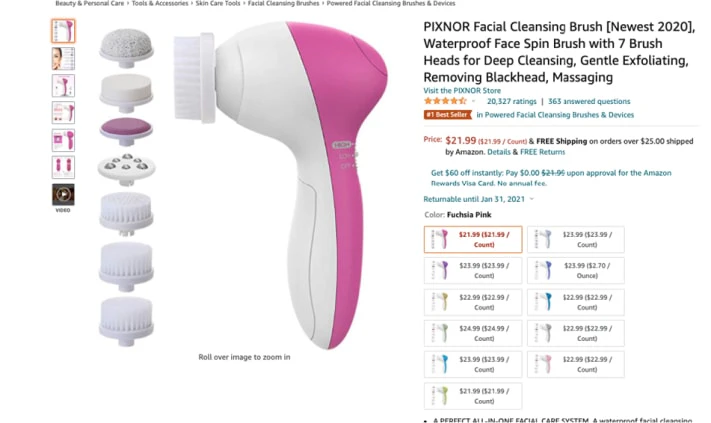
Example #3: Review your competitors’ titles and avoid overcomplicating yours
In some cases, simplicity could be your best option.
If your product is not technical and doesn’t have many variations, then a very simple approach with your product title can work.
Example #4: Show your unique value proposition
The key benefits of using Foreo are the following:
- A full-spectrum facial treatment
- Anti-aging
- Anti-acne
- Thermo therapy
By telling the potential shoppers your unique value proposition, you increase your chances of converting visitors into customers.
Example #5: Product Images Optimization
Your product images are a super important element of your product listing.
You should be saying more about your product in high detail and highlight key benefits or features.
As an example, Sdara Skincare does this very well.
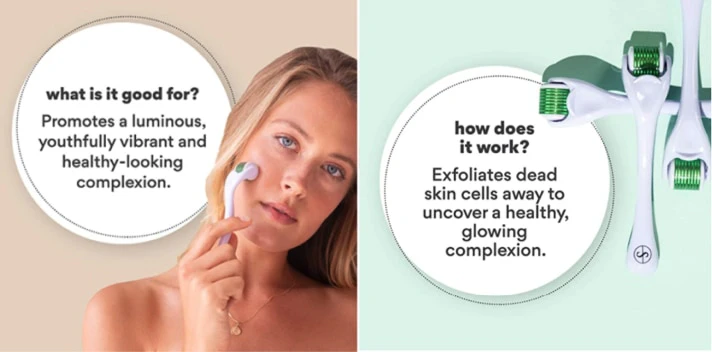
The seller is explaining why the product is good for and how it works.
They also have a testimonial from popular sites:

Review your top competitors and check what visuals they are using.
How do they communicate with their customers?
Are they using testimonials?
Are they using product benefit shots?
Are they using videos?
Plan your A/B test for product visuals carefully to maximize the effectiveness.
Example #6: Combat objections
If it’s difficult to show your product benefits and features, then you could mix a product image shot with text on it or by using a product video.
If you know your shoppers’ objections, you could combat them with your product page copy, images and video.

For example, people that see derma roller don’t know how to use it or how they can benefit from using it.
The seller has created a detailed video about how to use the product and the benefits from it.
Example #7: Create product variations if possible
Creating variations can help your store sell much better.
For example, if you are selling organic deodorant, you could add different scents, like Native did below.
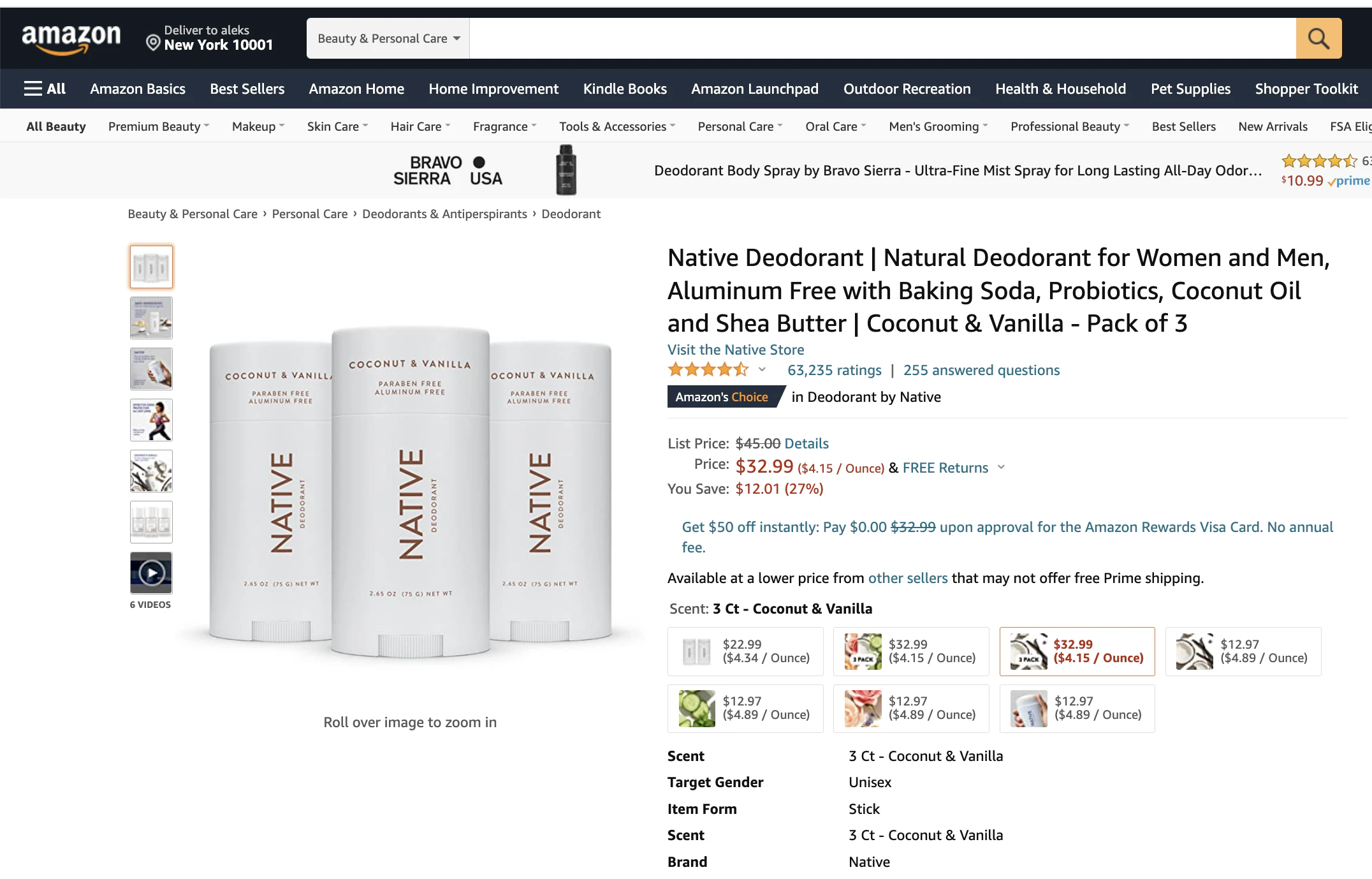
Add your variations to the existing listing if possible, so you could provide more options for your potential customers.
By creating different product variations on a single page, shoppers will have a bigger selection and are more likely to purchase your products.
This also gives you an opportunity to sell more than one unit.
Example #8: Write direct-response copy
One of the things that Native is doing very well is handling objections and showing shoppers why they should start using their products.
Look at the description:

The brand is telling shoppers about the ingredients included, and on the second bullet point, they go straight to the value of the product: “effective protection”.
The idea is to highlight the benefits and the solutions with your copy.
Example #9: Less is more; don’t over complicate your copy
Avoid over complicating your copy. I see that many sellers are writing complex descriptions for simple products.
You will have to test long copy versions compared to short ones, but if your product is simple, then a short version will perform better.
For instance, if you are selling apparel, then including your product sizes and materials might be enough.
Chapter 4: Amazon Click Through Rate
This chapter is all about Amazon Click Through Rate (CTR).
Do you have to increase your CTR?
Yes, you do.
In this chapter, I’ll show you how we are currently increasing our clients’ click through rates.
Why Is Click Through Rate Important?
Click Through Rate (CTR) is used to measure how well your ads, keywords and free listings are performing. CTR is measured by the number of clicks divided by the number of impressions.
If you had 13 clicks from 100 impressions, then your Click Through Rate would be 13%

To increase your sales and profits you need to work on your CTR. A higher CTR can result in a lower CPC.
Measuring and optimizing your CTR will help your growth without increasing your ad spend.
AD RELEVANCE
If your CTR is low, you have to troubleshoot.
Is your product offer relevant to the shoppers’ search?
Are you bidding on irrelevant keywords?
If your CTR is below 0.15-20%, then most likely your ads are irrelevant to the shopper.
For example, if you are selling soy candles, but your ads show up for “cheap candles” then most likely your CTR is very low.
Soy candles are about $20-30 while “cheap candles” are about $5.
If you are competing in the same auction with a much cheaper product, then it might be difficult to have higher CTR.
Implement negative keywords to make sure that your ads are showing up only for relevant keywords.
CLICK THROUGH RATE VS CONVERSION RATE
Click Through Rate is about clicks and conversion rate is about visitors to customers.
CTR is all about clicks, and CVR, or conversion rates, are all about how many of those clicks lead to sales.

Work on your CTR to get more organic and paid traffic to your listing.
So you might be wondering, what impacts Click Through Rate?
Here is an Amazon CTR Optimization checklist:
- Product Image
- Product Title and Text
- Reviews number
- Product Price
- Ad Placement
- Product Image
Your product’s first image is the most important element. It should show your product in a great detail. Using high-quality images is a must.
Here is a good example:
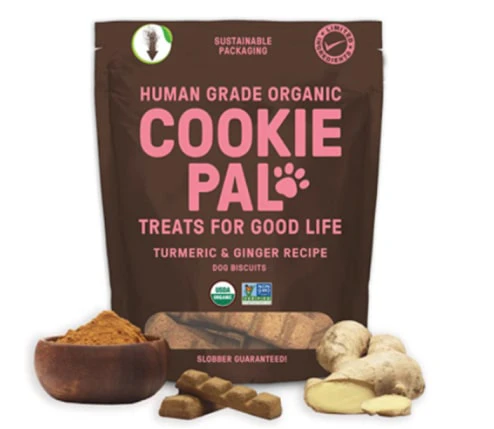
This image looks very professional and shows the product in detail.
Creating a product image like the example above will increase your perceived value and improve your CTR.
Professional images will entice shoppers to click on your product and learn more or purchase your product.
If you want to sell well on Amazon, you have to optimize your first product image – there’s no way around it.
PRODUCT TITLE AND TEXT
Ideally, when you are creating your product title and description, you will use a mix of your target audience jargon and keyword research.
In our next chapter, we will cover Keyword Research in depth, so don’t worry about it for now.
Focusing on your target keywords is essential for your brand growth on Amazon. You need to understand your audience and create your buyer persona.
Why are customers buying from you?
How does your product help them?
Read reviews, both yours and your competitors’, to get an understanding of how your audience thinks, what they like, and what they don’t like.
NUMBER OF REVIEWS
Amazon reviews are a must if you want to sell more of your product.
We find that reviews are not the biggest ranking factor on Amazon in terms of organic traffic, but it’s the biggest factor on conversion rate.
The more reviews you have, the more your conversion rate increases.
Reviews also build higher trust for shoppers that haven’t bought from you before.
Amazon reviews also impact Click Through Rate. Once you have more reviews (+100), your CTR will increase.
Generating incentivized reviews is not allowed on Amazon. To compete with the top sellers in your niche, you have to generate reviews , and you have to do it legally.
Implement follow up sequences via email, run paid ads, and drive external traffic to start getting reviews. It’s going to take some time, but the effort is definitely worth it.
AD PLACEMENT
Optimizing your ad placements is a key component to improving your Click Through Rate.
Amazon’s average CTR is about 0.40%, however, that data includes all ad placement data.
Let’s take a look and search for “collagen pills.”
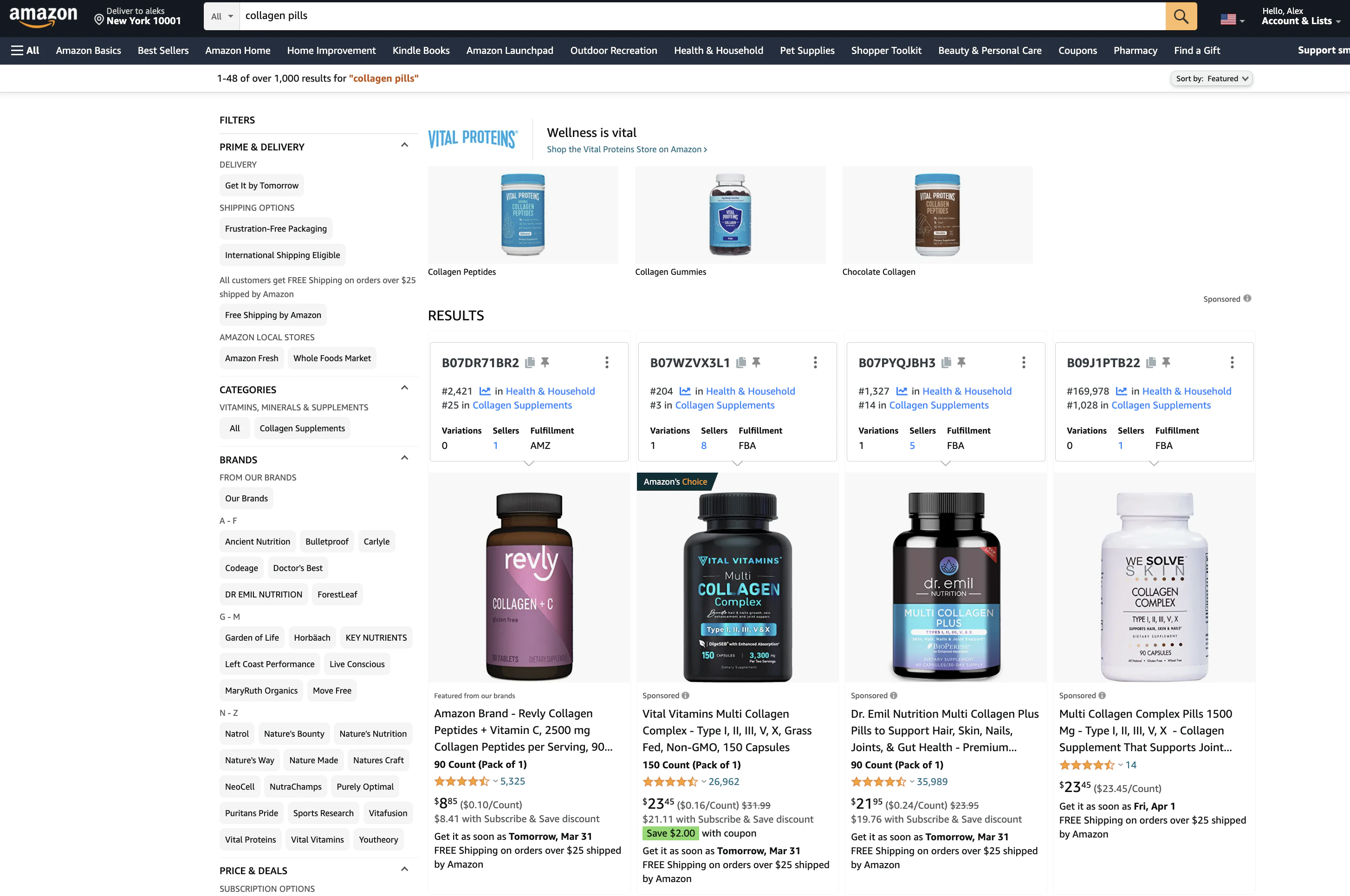
You can see that there are 4 ads shown by Amazon.
3 of them are sponsored products and one is a sponsored brand.
If we keep scrolling through the page, we’ll be able to find 8 more Amazon sponsored product ads. That’s a total of 12 ads.
So, if we click on a product that we like (it doesn’t matter if we click on a product ad or not) we will be taken to the product details page where there are 2 carousels with 26 product ads (13 per carousel).
If we keep scrolling, we will see 1 more carousel with 13 ads.
What does that mean for you?
As an advertiser, this increases the impression count very quickly, which is why the average CTR 0.36% seems so low.
- AVG. CTR for product pages is about 0.2-0.4%
- AVG. CTR for rest of the search is about 0.5% – 1%
- AVG. CTR for top of search is about 2-5%, which is much higher compared to product pages and the rest of the search
- About 55-60% of all clicks on Amazon are attributed to the top of search results page
When you are creating your marketing strategy, keep these stats in mind because where you place your ads is very important. Focusing on good keywords + right placements = sales.
AMAZON BADGES
Badges increase the trust of your product. They add extra visibility and distinction in SEO of similar products on search results, and there are several badges available that you could have.
Keep reading to learn which badges you should try to gain to improve your CTR, and ultimately, your sales.
Shoppers will see your badge and click on your product.
Remember this: Badges = Higher CTR.
BEST SELLERS
When a shopper sees a product with the best-seller badge, the shopper thinks, “this is the best product in the niche if everyone is buying it!” Then, the shopper clicks on the product and its CTR increases.
Do you want to have this badge? You have to be the best seller.
Sounds difficult to achieve? Yes, it’s difficult.
If you are in a category which is very competitive, you could focus on a more relevant niche category.
For example, if you try to become the best seller for deodorant, then you will end up competing with leading brands that have been on the Amazon platform for the past 5 years, but if you focus on a category like organic deodorant for women, then outselling the top seller in a smaller category is more likely to happen.
One of our strategies for that is to run ads and offer coupons.
AMAZON’S CHOICE
The “Amazon’s Choice” badge shows to shoppers that a product’s value is confirmed and the product is good.
Amazon’s criteria on Amazon’s Choice badge is based on product rating and shipping speed.
The required criteria to unlock the badge is:
- Good Keywords | Have accurate, well placed keywords.
- Competitive Pricing | Work out the sweet spot in the industry.
- Great Reviews | Lots of good reviews, & little to no return rates.
- Prime Eligible | Lots of stock & ready to arrive in two days.
COUPONS
Everyone likes to save money with a coupon. Shoppers on Amazon are no different. Coupon badges are an irresistible offer for the shoppers on the platform.
Shoppers think that they are getting a good deal (which they are!) and it makes them happy.
Coupons are one of the most popular ways to offer discounts. However, it’s not the only way.
TODAY’S DEALS
Shoppers love “Today’s deals” because it offers discounts. In that scenario, both sellers and shoppers win.
Remember, the more you sell, the higher you rank.
How shoppers feel about Today’s deals.
There are three daily deal promotions.
1) Deals of the day
2) Saving and sales
3) Lightning deals
Deals Of The Day
These deals are irresistible 1 day sales that offer unique discounts on single products & packages. Strategically highlighted with bold red, it easily grabs attention & invokes interest.
Saving & Sales
This promotional feature showcases sales handpicked by Amazon. It includes current discounted items & ongoing promotions.
Lightning Deals
Lightning deals are products that have limited stock x limited time coupons x countdown timer. Lightning deals are not PPC. Rather, sellers must accept lower profit margins in the short term—to help elevate their brands in the long term and meet their marketing goals.
Chapter 5: Keyword research for Amazon Ads
Making use of every relevant keyword is essential for a highly successful Amazon product listing. Forgetting one important keyword is like letting money flow down the drain.
Here are 6 keyword research methods that guarantee great results & high visibility.
Why Is Keyword Research So Powerful?
Why Is Keyword Research So Powerful?
Keyword research is an integral part to creating a highly optimized Amazon product, because every keyword you use permits another stream of customers to find your product on Amazon.
For example, one customer may search for a journal while another might search for a diary or notebook. If you only list one of these keywords, you lose the other two streams of customers looking for a product just like yours.
On the flip side, a customer might just be looking for something in a larger category. So you could target other avenues, like stress relief, self care, or girls birthday gifts and more.
Keyword Research & Increased Sales Go Hand In Hand
Successful keyword research is when you have a comprehensive list of every relevant keyword for a product. Every keyword you don’t cover is a missed opportunity to make money.
So more relevant keywords = more sales = more money.
THE SYSTEMATIC APPROACH TO FINDING KEYWORDS
Working systematically when finding keywords helps you to not miss or overlook any during your research. To do this, group your keywords into two categories; primary and secondary keywords.
1. Primary Keywords
Primary keywords are directly related, such as a journal or diary. They describe the product itself. General keywords would be book or notebook.
2. Secondary Keywords
Secondary keywords are more dynamic & can include a variety of categories, such as a person, place, aesthetic, or niche. Some examples are pink girls journal, or minimalistic locked diary.
Once you have developed a list of primary & secondary keywords, it’s important to identify relevant combinations of both. You can also fast track this entire process with Amazon keyword research tools.
6 Amazon Keyword Research Tools
1. PUT YOURSELF IN YOUR CUSTOMERS’ MINDSET
Try to understand the reasons your customers would want to buy your product, what affects their choices, and what they truly want to gain from your product.
If the product is hard for you to understand or resonate with, gain access to relevant forums, groups, & posts that can shed light on what people think about similar products.
It can also help you discover little gems, like common abbreviations or misspellings of your product, synonyms, or even things like people’s pain points or desires:
- Why would they buy your product?
- What products might they buy instead?
- When would they buy it?
- Who would they buy it for?
- How would they become inspired to buy it?
- What emotion are they looking for in your product?
2. AMAZON AUTO COMPLETE
Amazon offers a bounty of free & easy keywords in their search bar. All you need to do is search a relative word & Amazon suggests the rest.
Best of all, every suggestion the search bar offers is based on the most searched terms. Then, you can start to type in different words to find different combinations.
Remember to do it systematically so as to not miss any vital words. Go from A-Z, and look for patterns & strong keyword matches. Note down everything into categories & easy to follow lists. You can also find new categories to list your product in Amazon’s suggested categories list.
3. AMAZON’S RELATED PRODUCTS
Another great way to increase visibility is to think of related products. For instance, if someone wanted a journal, they may want pretty pens or washi tape too.
So if you have space left for extra keywords in a couple of discrete areas, you could include suggested item keywords. Search terms can be placed in multiple areas, so don’t forget to do your research & capitalize on placements too.
4. COMPETITOR RESEARCH
What better way to find working keywords than to look to your highest performing competitors?
Simply look at your competitors’ titles & product descriptions & note any keywords you haven’t thought of yet. You can discover a lot of different purposes & perspectives for your products. For example, a journal can have multiple purposes, like a friendship or relationship journal. It can also cover different topics like love, finance, dreams, manifestations, or poetry.
The better you understand the purpose, benefits & uses of your product, the greater your keyword research will become.
5. THESAURUS
The unsung hero of keyword research is the thesaurus. It’s endlessly useful for discovering alternatives words, contexts, & lingo for products.
This is especially useful for both primary & secondary keywords. It lets you cover almost every variation of your product. For example, if you search for diary, you’ll get the following:
1. Search primary words
Note any new synonyms that are likely to be used to find your product. For diary, the thesaurus suggested memoir and organizer.
2. Search descriptive words
Search descriptive synonyms & find alternative descriptive words. For example, the term minimal might have simple, simplistic, tidy, small, or bare as synonyms.
3. Search slang & misspellings
There are a lot of different variations of English out there, from US, to UK, & AUS. Each one also has unique slang terms for many words.
So be sure to research alternative spellings, slang forms, and common misspellings.
6. KEYWORD RESEARCH TOOLS
Optimise your workflow for larger businesses with multiple products by using a keyword research tool.
This fast tracks keyword research and can help you minimise work time. Research tools can help you skip most of the steps & provide you with many variations of the keywords, including competitor keywords & related products.
There are multiple free & paid keyword research tools that use different techniques & targeting approaches.
The End Result
At the end of your research, you should have a list with primary & secondary keywords. These keywords should cover most, if not every likely search term for your product.
By doing such a thorough keyword brainstorm, you will unlock many different search streams, thus creating a higher chance of a wickedly successful Amazon product listing.
Chapter 6: Mastering Amazon Advertising
In this final chapter, we’ll cover how you can improve your skills at Amazon advertising.
We’ll discuss 13 important rules to keep in mind as you create your ads.
RULE ONE: Start with long-tail keywords, then move into saturated keywords.
Before you can gain any ground in saturated keywords, you first need to master long-tail keywords. This golden rule applies to all who are launching a new PPC journey.
Because, only after you have established yourself in long-tail keywords will you be able to climb the food chain and rank for saturated keywords.
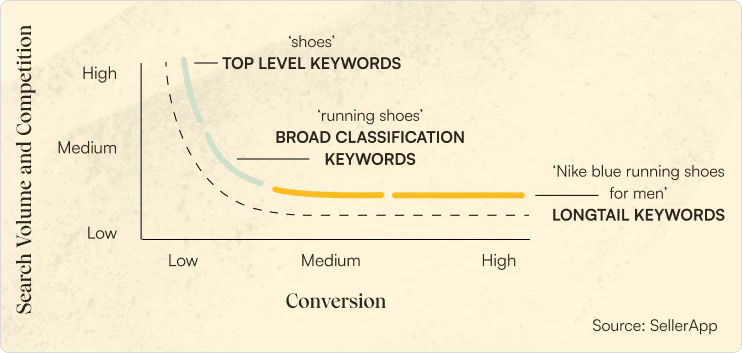
Amazon PPC Keyword Strategies
As a new seller, it is vital to target long-tail keywords before saturated keywords. Doing this enables you to save money on CPC.
Why? Because when you target saturated words as a new seller, you will have heaps of established competition with better reputation that will likely rank before you. With saturated words comes high CPC too. This will make you spend a lot of money trying to keep up with bigger sellers without getting good exposure.
Start off with long-tail keywords, as there is little competition and it’s the easiest place to get ranked initially, which will help you gain your first sales and build the first blocks of your reputation. You can begin to move up the keyword food chain. Over time, you will build more brand awareness and achieve higher ranks in Amazon SERP.
FIRST STEP : LONG-TAIL KEYWORDS
If you’re selling something very specific – for example a minimalistic wooden journal – you can target very specific long-tail keywords. “Basic brown leather diary.” or “minimalistic brown a4 journal” and so on, are good examples of what you can target.
SECOND STEP : GENERIC LONG-TAIL KEYWORDS
Once you have developed some sales and brand awareness/reputation, begin targeting the next tier of generic keywords.
For example, you can start targeting “minimal brown diary” or “minimalistic brown journal”, and so on. The more you improve your products search visibility and association with saturated terms, the more Amazon’s algorithms will begin to rank you higher and higher.
THE THIRD STEP: SATURATED KEYWORDS
Once you have achieved steps 1 and 2, it’s time to move onto the most saturated and searched keywords. This would include, for example, “brown journal” and “basic diary”.
To truly optimize this, you should split test multiple campaigns that try different keyword combinations. This will help you understand the best combinations for your product.
Always remember to target relative keywords that really resonate with your product, otherwise, you will generate traffic that isn’t interested in actually buying your product.
This could be keywords like “to-do-list” or “yearly planner”. While people can use a blank journal for that, it’s not likely what they were looking to buy.
RULE TWO: Rank Optimization Through Amazon PPC
This method helps you improve your product ranking for a keyword within Amazon SERP. To achieve this method, you will need three distinct ad campaigns.
Each campaign should target different bids & budgets. These bids & budgets are determined by your keyword page ranking.
Simply track your listings page location and position with your choice of keyword tool.
PAST PAGE FIVE
If your product is ranking past page five, you should focus on only a few best performing keywords that are converting well.
You will need to allocate a modest budget to concentrate on the phrases that are ranking the best.
PAGES TWO TO FIVE
For keywords ranking between the second and fifth pages, you can follow the method which focuses on top performing keywords. You’ll be constantly bidding, so that over time, you can understand which keywords are getting the greatest amount of sales.
Once you have established this knowledge, you can optimise campaigns with those particular keywords. At this stage, when you are generating good conversions for your top keywords, Amazon will begin ranking you organically, too.
THE FIRST AND SECOND PAGE
Congratulations if you are ranking on the first two pages. At this stage, a more aggressive pursuit is required. You’re close to ranking in prime positions, which are highly sought after.
The only way to claim these positions is aggressive bidding, which will help your product land the highest visible spots on Amazon. Once here, it’s important to remember the variation of your keyword combinations.
You will be able to easily boost sales now that you have established footing and reputation on Amazon for that product. A good way to do this is by creating a secondary campaign to target those other keywords combinations. In the secondary campaign, change the match type to phrase, and cover as many variations as possible.
Please Note: When reviewing campaign performance, note any keywords that aren’t generating sales and that are instead costing you. Jot them down as negative keywords, and avoid paying for them. Do not fully remove them, as they still play a role in Amazon PPC.
RULE THREE: Ad Placements Should Determine Your Bids
Amazon has added a new tool that enhances ad placement bids, which allows better optimization and more control over your ads. Primarily, it helps customise where you want them to appear, and how much you are willing to spend. This enables you to easily adjust your bids based on placements.
The main three places your ads are likely to appear are:
- On the first page, at the top of the search results.
- From the second page to beyond, in differing positions.
- On other pages like “product detail” pages, and “add to cart” pages.
To understand how each campaign performs, simply view your placement report. It will tell you which position brought you the most exposure and conversions. Once you have attained this knowledge, you can adjust the bidding multiplier accordingly. Choose something between the range of 0% – 900% to grant you the best odds of success.
For example:
For this campaign, the best converting campaign position was displayed on product pages. So one good strategy here would be to adjust the investment and adjust the bid. You can decide the bid randomly, but take into account that the ACoS is high, so it’s best to limit the multiplier to 50%.
However, the best click through rate was 2.57%. This was when the ad was positioned above the search results. Considering that the ACoS is low, a good strategy would be to test the outcome of increasing the multiplier dramatically. Around 100 – 200% will yield good results. This is likely to work well since you have good footing in the top position.
What should your default bid amount to if you are using both the placement multiplier and usual bidding strategy?
There are three types of campaign bidding strategies you can use:
1. Dynamic Bids | Down Only: These bids will be lowered automatically, if Amazon’s algorithms determine that the ad is less likely to land conversions.
2. Dynamic Bids | Up and Down: If the ad is at the top of search results and likely to generate sales, the bids may be raised by a maximum of 100%. If it is unlikely to sell, then the bid will reduce. For every other ad position, the multiplier is capped at 50%.
3. Fixed Bids: With this bid, it’s based exactly on what you chose. It doesn’t adjust based on the likelihood of sales.
To calculate your default bid amount, you need to remember two things. Firstly, the placement multiplier is added to the bid price first. Then, a dynamic bidding increment is added to the final figure.
This table summarises the math for the bid amount of $1.
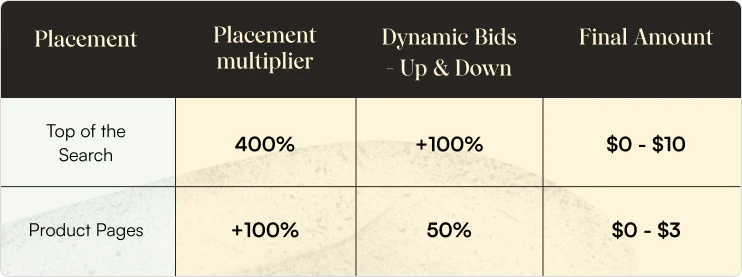
RULE FOUR: Improve visibility and brand awareness by grouping variations together.
Multiple variations of the same product are commonly referred to as child ASIN. If you were to create and run ad ad campaigns for each product variation, you’d waste your budget and likely compete against yourself for the ads.
This is sometimes called product cannibalization and should be avoided when it comes to PPC campaigns. To avoid product cannibalization, group individual variations into one package.
For example:
Say you are selling four different styles of pens at $5 apiece. It would be profitable to combine and sell them under one single pack, for say, $18.
This helps:
1. The value of your average order increases.
2. Brand awareness increases due to people favoring deals.
3. Increase brand visibility in the marketplace.
4. Focusing on only one budget with your PPC budget.
RULE FIVE: Run campaigns for your top child ASIN.
For people with a limited bandwidth or budget, focus on running PPC campaigns just for your top performing variations. Remember, this strategy works best if the variations are listed as child ASIN’s.
You may miss out on the opportunity to increase your average order value and other bonuses that are attached to grouping products together. However this method will be easier on your pocket and more efficient.
Another benefit of this method is that when someone looks at your top selling variant, it’s likely they will see what else you have. Depending on their taste, they might go for a different variation, thus getting you a sale on your other products from your top selling variant.
For example:
- Say we have four different types of pastel pens that are pink, blue, yellow and green. They are categorised as separate child ASINs, but in the same parent listing. Of these four, the pink is your best seller.
- Say you create a PPC ad for each pen, only one will win the top ad spot. The rest will have to compete and cause wasted ad spends, which increases the ACoS for your whole ad campaign. This isn’t very efficient.
However, if you have focused your efforts only on the pink pastel pen by creating dedicated ad campaigns just for that variation, you wouldn’t waste money competing with yourself and likely generate more traffic on Amazon.
With more people visiting your listing page, more people will be interested in checking out your other pen colours, this increases the chance of making multiple sales across your variations from one best variant PPC ad campaign.
One trick you can use to give the underdogs a chance is to increase the price of the pink pen to give the rest an advantage.
RULE SIX: Target Alternative and Indirect Keywords.
Sometimes people are looking for solutions that they aren’t aware of yet. Start brainstorming alternative and indirect keywords that target the not-so-direct searches people might have.
When you establish what solutions your products address, it will really give your listing an edge. So make sure your features and benefits work to capture their attention, while hooking their pain points and desires.
For example:
Say your main product is green tea. You can identify the solutions your product addresses and target the same through Amazon Sponsored Products.
For instance, in addition to targeting all of green tea’s popular keyword variations and the long-tail search queries in your ad, you should also go after the other alternative words, such as ‘natural weight loss remedy,’ ‘healthy coffee alternatives,’ ‘natural metabolism booster’ and so on.
Remember to also research your competitors and identify their key benefits and features. They will have tried and tested many angles already, which you can use to your advantage.
You should make sure to not only target the keywords in your listing, but to also extrapolate on the benefits in your copy.
This creates a more consistent, convincing, and powerful listing overall. Plus, the more keywords you start generating customers from, the more likely you are to increase your product and brand visibility.
Remember: These campaigns shouldn’t replace existing campaigns, but instead complement them. Start with a small budget, then optimise after a couple of weeks.
RULE SEVEN: Put Similar Priced Products in the Same Ad Group
Assume that you have three similar products on Amazon listed as separate ASINs – A, B, C. These products are priced respectively at $10, $15, and $50.
Let’s say you start the Sponsored Products campaign with all three products grouped in the same ad group. You are spending $5 every day to land a sale for each product (again, just a hypothetical example). In this case, your ACoS will be as follows:
- Product A: 50%
- Product B: 33.3%
- Product C: 10%
As you can see here, the product C has the lowest ACoS among the three. However, the overall ACoS of the ad group works out to be around 31%, owing to the high advertising cost of sales for product A and B.
Now, consider a scenario where you group A and B in the same ad group, with C in another. In this case, the ACoS for product C will not be brought down by that of the other two items. Its impressions will also not suffer, since it has a separate budget.
This will also give you better control over your advertising budget, and as a result, you can devise your plans accordingly.
The same strategy holds good for child ASINs that are priced differently. If you have multiple variations, focus on the one that is priced the highest and the sales will eventually trickle down in other variants. It will also keep your ACoS under control.
Just like the plan mentioned above, place the most priced variation in a separate campaign and focus running advertisements running only for that product.
RULE EIGHT: Use product performance to structure ad campaigns.
Ad campaigns are most often based around keyword performance. If we see a keyword that is converting very well in an auto campaign, we can move it to manual and set match types for better control over bids and daily budget.
While this has proven to be an excellent strategy to improve your products’ rank of Amazon, it can be a bit tricky to control the overall ACoS, simply because some products may require more clicks than others to make a sale.
So, instead of creating ad campaigns based on keywords, consider creating them based on the performance of a product.
Let’s say you have an ad group with five products of which two have an ACoS of 50%, while the rest are averaging at around 20%. The two products with a high ACoS are responsible for increasing the overall ACoS of the campaign.
Thus, a good way to approach this would be to take those two products and put them in a different campaign.
With this, the first thing you will achieve is to reduce the overall ACoS of your first campaign. Secondly, it will become easy for you to work on reducing your ad spend and improve the performance of your PPC campaigns.
Lastly, Amazon’s A9 algorithm analyzes metrics like click-through-rate, conversion rates, and more, to determine where to rank a product. If all of these products are placed in the same campaign, the results are going to look like an average of their performance.
But, if you structure them based on the performance of the product, the whole outlook changes.
RULE NINE: Target Your Own Products Through Product Targeting Ads
This advanced Amazon PPC strategy is a pretty ingenious way to get exposure for your products on Amazon. Ever heard of this beta feature called Product Targeting ads? In case you are not aware of it, this option allows you to target customers by specific products and categories. Think Product Display Ads, but with more control. You can target specific ASINs and your ads will be displayed on their product pages.
Here is how you can use this to your advantage:
- Assuming that you have multiple ASINs, pick those products that are struggling to get sales, or have poor visibility within the Amazon search results.
- Create product targeting ads for those underperforming products. Target your top ASINs – the products that are bringing you the highest traffic and conversions. Now, the ads for your low-sales products will be displayed on the pages of your top performing ASINs.
You can initially start with just one or two products for these ads. Run the campaigns for a couple of weeks and then analyze the ad performance reports to understand your return on investment.
If it turned out to be a prudent one, then you may want to consider running more similar ads for your products.
This PPC strategy has significant advantages:
- Customers will stay within your brand. Even if they don’t like the product they are viewing, they may end up visiting a different product of yours from the same page. It is like creating an intricate web that keeps the customer within your brand.
- You get to display your entire line of products to the customers. This strategy can work well if you pick your most-viewed product and target it from your other ASINs, that is, display their ads on this product’s listing page. This also helps in keeping your competitors off your listing.
- Increased exposure for your products. Need we say more?
- You can push your underdogs and your newly launched items by giving them ad space on your best-selling products.
RULE TEN: Target the Products that Show up in Google Ads
This strategy is an extension of the previous one.
In addition to targeting your own products through product targeting, you should also use this method to get prime real estate in your top competitors’ listings: listings which show up on Google Ads, Facebook ads, and are promoted by influencers on Instagram, YouTube, and more.
What you are doing here is capitalizing on the visibility of your competitors. They have already done the heavy legwork to bring their listings a lot of exposure.
People are aware of their brand in the market. Now, all you have to do is place your products’ ads on those pages and piggyback on their sales.
RULE ELEVEN: Gauge the Buying Behaviour of Your Target Audience
One of the key factors which go into making ad campaigns click is understanding your target audience. Once you understand the demographic you are after, it becomes easier to craft ad campaigns that convert.
You will benefit greatly if you can figure out their behavior online, how they like to shop, their general interests, and everything else that impacts their purchasing behaviors. For example, if you are selling a product that appeals to 18-34-year-olds, then it would be feasible to run ad campaigns during the evening or night when they are most likely to have time to browse Amazon.
Similarly, if you are selling a product ideal for homemakers and work-from-home moms and dads, then timing the ad campaigns to run in the afternoon may make more sense.
Run campaigns during different times of the day to identify that optimal timeline during which you get the most conversions. Once you’ve established that, you can bid aggressively on your ads during that time.
You can also combine this effort with Headline Search Ads and Product Display Ads, catered specifically for your audience.
RULE TWELVE: Experiment with Different Match Types and Bid Amounts
In addition to experimenting with campaign timings, you should also look into playing with match types and bid amounts. Cost-per-click for a particular keyword in an automatic campaign will be substantially cheaper than its counterpart in manual exact.
Similarly, the CPC for a broad keyword in manual will be costlier than automatic, but cheaper than exact. In the same manner, your campaigns may deliver good results when setting it to phrase match, in comparison to exact.
A good Amazon PPC strategy is to add campaigns for the same set of keywords, but with different parameters. It may be campaigns with automatic, manual, different match types, different bid amounts, various timings, and more.
On the back of the same variables, the idea is to figure out the factors that drive traffic and conversions. Many such combinations exist over here; the trick is to find that sweet spot perfect for your campaign.
You need to observe your ACoS, sales, keyword performance, ad performance, CTR, and other data points, while varying the campaign parameters. It will help you see what is working for you and what isn’t.
There is quite a bit of trial and error here, but if you have a strong set of keywords to target, your job is half done.
RULE THIRTEEN: Use New-To-Brand metrics to drive sales.
If your brand is registered with the Amazon Brand Registry you can unlock a bounty of enhanced reporting tools, including Sponsored Brand ads. This allows you to customise the ads with your own logo, headlines, and product selection.
You can analyse the sales generated from first-time shoppers of your brand on Amazon. This data can be used to optimize your Sponsored Brand campaigns, helping you acquire new customers.
You can cross examine this with what proportion of your sales is attributed to recurring customers and craft your advertising strategy accordingly.
Understanding new-to-brand metrics will allow you to split the traffic into two segments – new and returning. You will find this data easily from the percentage of orders new-to-brand and percentage of orders new-to-sales. If you have more recurring customers, then you can curate advertisements for them through Sponsored Products.
Final Thoughts
There you have it – everything you need to know about advertising on Amazon.
If you’re looking for an experienced partner to level up your Amazon advertising strategy and start increasing your ROI, we’ve got you covered. Click here to book a call and get your free marketing strategy!














.webp)

.webp)








.webp)










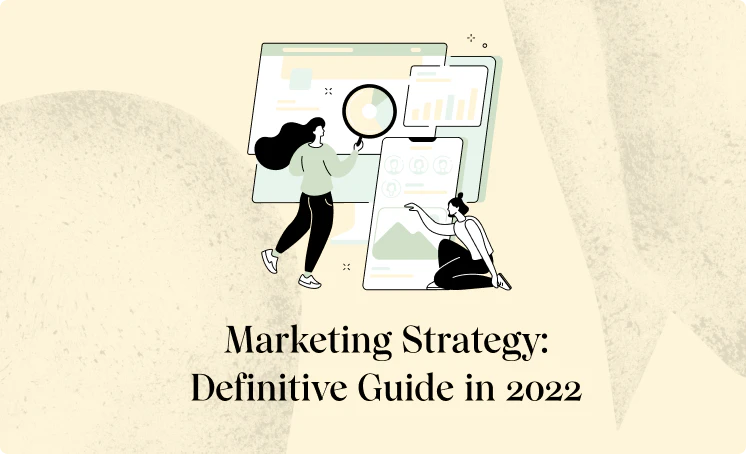






























.webp)






